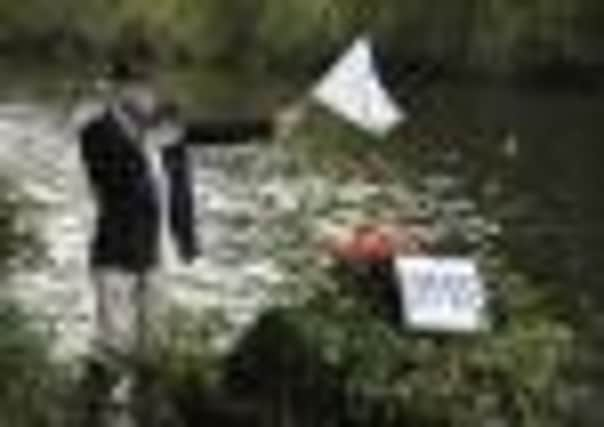Changing life caught in full flow by man from bank


During that time Tim Smith has photographed industry and life alongside the waterways in the Aire Valley showing everything from life in a textile mill to a rowing regatta on the River Aire at Shipley.
He has seen many changes as he walks or cycles along the River Aire or the Leeds and Liverpool Canal recording the life and history of the area in pictures.
Advertisement
Hide AdAdvertisement
Hide AdHis images are featured in a new exhibition at Shipley Focus’d, the gallery in the centre of Shipley.
It shows how traditional industries such as textiles and engineering established themselves along the canal, a highway of the Victorian age which carried raw materials in and finished goods out.
It contrasts these with the hi-tech industries of today, which rely on road, rail and digital broadband networks to connect them and their workforce with the rest of the world.
The pictures also celebrate the exceptional rural landscape within which local communities live and work.
Advertisement
Hide AdAdvertisement
Hide AdThe waterways that once carried goods such as wool, coal and cloth have now become a corridor for wildlife, tourism and leisure.
Mr Smith, a freelance photographer said: “I live near Shipley Glen, and the view from our house overlooks the river and canal as they pass through Saltaire and Shipley.
“I often walk or cycle alongside the waterways, but carrying a camera for this project has enabled me to explore them with fresh eyes. I hope the exhibition will do the same for other people.”
Bradford was once a centre of textile production with many grand mills standing as testimony to its industry.
Advertisement
Hide AdAdvertisement
Hide AdAll too often, as such industries die, their memory died with them.
No-one bothered to record the workers’ experiences because everyone took them for granted; the way of life seemed too familiar and too commonplace to be interesting.
He adds: “It is a long time since these vast palaces of industry were at the height of their production.
“Some are long gone, others remain but have been turned into modern apartments or offices housing hi-tech industries.”
Advertisement
Hide AdAdvertisement
Hide AdMr Smith admits the newer industries don’t always make the most fascinating of subjects.
He explained: “I think photographing industry these days is a lot more difficult than it used to be because everything or most things are done sitting in front of a computer or are very hi-tech or most things happen on quite a miniature scale.
“So I do miss the going into textile mills and foundries because visually they were such interesting places but if you go into modern factories they tend to be more sterile places but having said that you can still find these pockets of industry that survive.”
Mr Smith’s work also takes him abroad and he says returning to his Yorkshire home after being away helps him appreciate his surroundings.
Advertisement
Hide AdAdvertisement
Hide AdTaking pictures also opens his eyes to some of the places on his doorstep and he hopes the exhibition will do the same for the public.
The exhibition, titled The Aire Valley Waterways, explores the Aire Valley between Keighley and Shipley by following the route of its two waterways.
It uses photographs taken over the past 20 years by Mr Smith together with work newly commissioned by the Airedale Partnership.
Shipley Focus’d project manager Scott Clarke said: “Tim is an excellent photographer who has worked all over the world, and we are delighted that Airedale Partnerships have been able to work with us to bring this brand new exhibition to Shipley.”
Advertisement
Hide AdAdvertisement
Hide AdThe exhibition, which opens today until June 29, is supported by the Airedale Partnership, which works with local partners and businesses. The gallery is in Market Square, Shipley, and is open Monday, Thursday, Friday and Saturday, 10.30am-4pm.
WATERWAY WAS VITAL TO ECONOMY
THE canal’s 127-mile length links the cities of Leeds and Liverpool.
It was in Yorkshire that the canal was first proposed. in the 1760s as merchants were desperate to expand the market for their cloth by gaining access through the port to the growing colonial markets in Africa and America.
It took almost 40 years to complete the vital link across the Pennines which became a vital trade route, with the most important cargo being coal, with over a million tons per year being delivered to Liverpool in the 1860s.
The Leeds and Liverpool Canal includes significant engineering features such as the Bingley Five Rise Locks in Bingley.
The route passes through 91 locks.